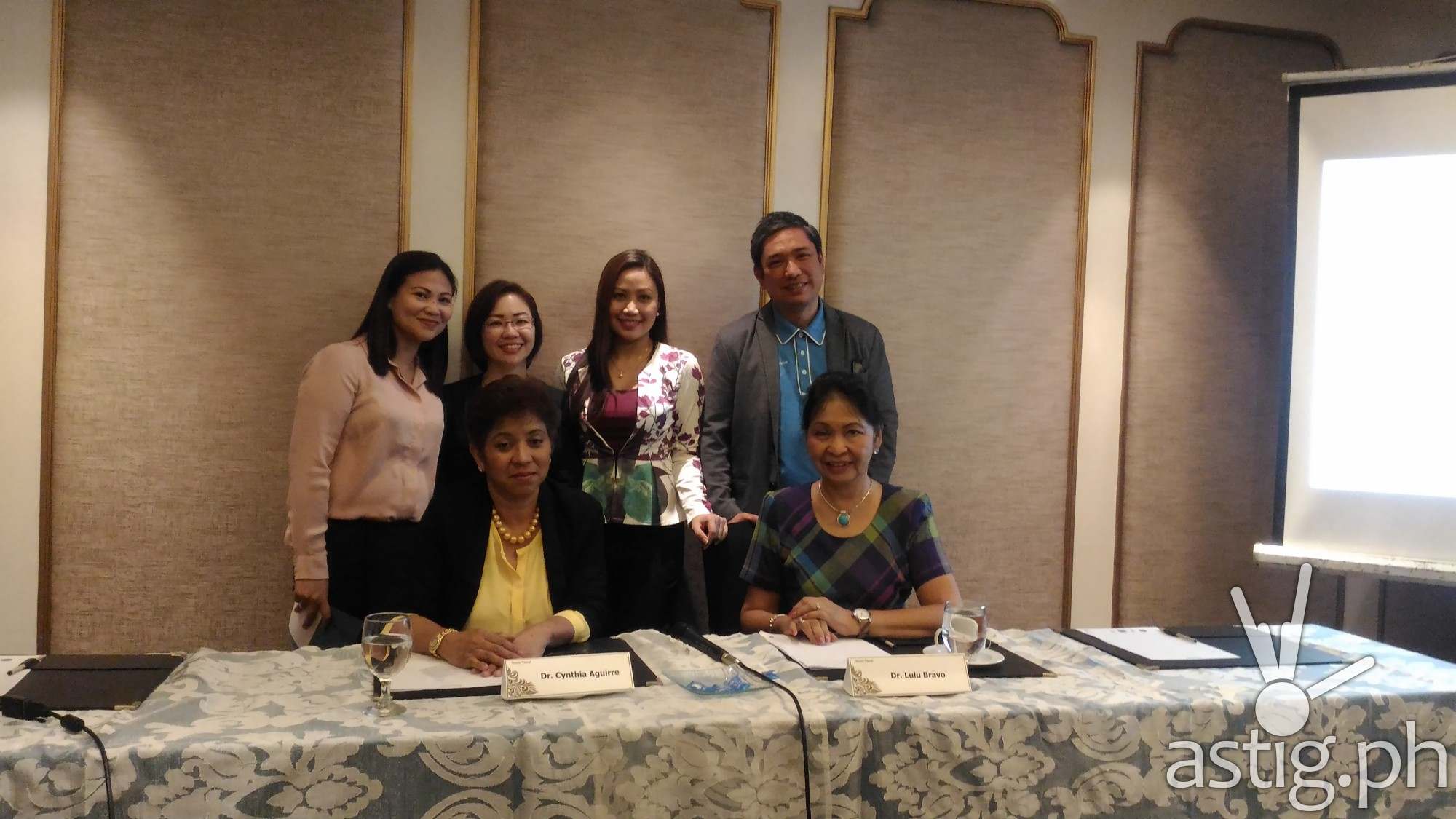Japanese encephalitis (JE) is a leading cause of viral encephalitis in Asia. Transmitted by the mosquito vector Culextritaeniorhynchus, the virus can cause inflammation of the brain, leading to high fever, headache, fatigue, vomiting, confusion, and in severe cases, seizures, spastic paralysis, and coma. It could also mimic a stroke, as was the case reported in Davao during the second half of 2016. There is no specific treatment for this disease. JE is fatal in 20% to 30% of cases and among those who survive, 30 to 50% suffer from permanent disabilities.
 Sanofi Pasteur officers with Dr. Cynthia Alcantara-Aguirre, Chief Resident in Pediatrics, The Medical City and Dr. Lulu Bravo, Founding President of Philippine Foundation for Vaccination (PFV).
Sanofi Pasteur officers with Dr. Cynthia Alcantara-Aguirre, Chief Resident in Pediatrics, The Medical City and Dr. Lulu Bravo, Founding President of Philippine Foundation for Vaccination (PFV).
Reports from the World Health Organization(WHO) have estimated that there are currently 3 billion people at risk for JE, living in JE-prone areas, including 24 countries in the Southeast Asia and Western Pacific regions. JE usually occurs in rural and agricultural areas, however, an epidemiologic study conducted by Dr. Anna Lena Lopez of the National Institute of Health (NIH) published in 2015, showed that the virus circulates in all regions of the Philippines, including urban areas like Metro Manila, constituting a significant public health burden. The study showed that although majority of cases occur in children younger than 15 years of age, adults remain at risk, with 15% of cases occurring in individuals older than 18 years.
In tropical areas, disease can occur year-round. Data from the Department of Health (DOH) Epidemiology Bureau surveillance system revealed that for 2016, among 875 acute meningitis-encephalitis suspected cases reported as of August 2016, 119 (14%) were laboratory-confirmed for JE.
As part of the government’s strategy to reduce mosquito-borne diseases, the 4S program was implemented several years back. 4S stands for: Search and destroy mosquito breeding places, use Self-protection measures, Seek early consultation for fever lasting more than 2 days, and Say yes to fogging when there is an impending outbreak.
However, mosquito-borne diseases are still on the rise. According to the WHO, the most effective way of reducing disease burden is vaccination against the illness. The WHO cites that there is clear evidence demonstrating the impact JE vaccination has on disease burden in a population. Hence, the WHO has recommended that JE vaccination be integrated into national immunization schedules in all areas where JE is recognized as a public health problem.
The WHO Global Advisory Committee on Vaccine Safety (GACVS) has reviewed data on the different types of JE vaccines (inactivated and live attenuated vaccines) and has found them to have acceptable safety profiles. Local scientific bodies, including the Philippine Pediatric Society (PPS) and Pediatric Infectious Disease Society of the Philippines (PIDSP), have recommended that JE vaccination be given as a single primary dose for those 9 months old and above. For individuals less than 18 years of age, this should be followed by a booster dose 1 to 2 years after. Other preventive strategies for disease control include bed nets, repellents, long-sleeved clothes, coils, vaporizers and mosquito control measures.
About the Vaccine
The JE-chimeric vaccine, a live attenuated recombinant vaccine, was first licensed in the Philippines in 2013. The vaccine is produced by Vero cell culture, a cell culture technology recommended by WHO.It is the only JE vaccine available locally and is approved for use for individuals 9 months old and above, with high immunogenicity rates.


